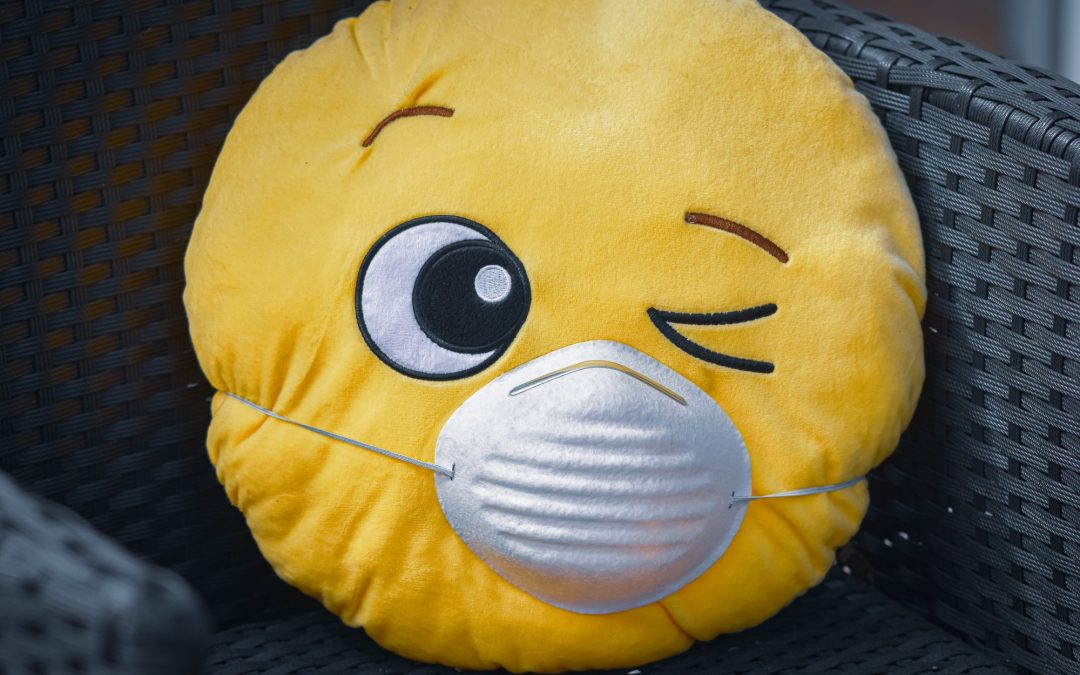Are you concerned about mold growing in your mask? You’re not alone. Wearing your face mask repetitiously without washing it could encourage mold growth, so the threat of mask-borne mold is real.
Breathing in mold could lead to unwanted respiratory disorders, something which we’re all trying to avoid. This article will explore how mold grows, the common types of mold found around a home, and how to avoid mask mold growth.
How Does Mold Grow?
While mold grows nearly everywhere, some places tend to be relatively mold-free: Dry, arid deserts. Nearly every species of mold requires moisture and humidity to survive and flourish.
That’s why you may commonly find mold in damp basements, mildewy bathrooms, or beneath leaky kitchen sinks. Mold requires water to survive. But it also requires a handful of other conditions.
Consequently, mold can be said to grow anywhere where there is:
- Water
- Organic Food
- Oxygen
- Liveable Temperatures
Avoiding mold starts with understanding how it grows. When you understand why mold is overtaking your face mask, home, or place of business, you can take the necessary steps to stamp it out and prevent it from returning.
Water tends to be the key to mold growth. Without it, mold cannot successfully spread and thrive. If you know of areas in your home that are consistently moist or humid, you may want to invest in dehumidifiers for those spaces.
Mold can consume all kinds of organic materials, including decaying plant matter. But they can also eat things that seem inedible, like concrete, drywall, plastic, and metal. Like humans, mold typically needs oxygen.
Because mold requires water to grow, some species may have adapted to warmer temperatures as a survival mechanism. Still, there are a few species of mold that can grow throughout cold weather.
The moisture that snowfall provides is beneficial for cold-temperature molds. As such, any place that experiences precipitation can also become a haven for mold. Mold remediation can help you get rid of mold, wherever it appears.
But without a post-remediation verification, the spores may soon return.
Types of Mold
There are thousands of different types and species of mold. Identifying mold spores growing in your home or face mask can be challenging.
Not only do many types of mold look nearly identical, but handling or breathing in mold spores during an investigation could be dangerous.
Stachybotrys Atra
This may be the most infamous type of mold. It is often referred to as “black mold,” though it’s not the only type of mold that tends to be darkly colored. However, it’s one of the most toxic types of mold.
Breathing in the spores or coming into contact with them can result in respiratory distress, cognitive difficulties, and a suppressed immune system. Preventing black mold is crucial.
Consequently, homeowners and property owners should schedule regular mold tests. Still, Stachybotrys atra isn’t the only type of mold to watch out for.
Cladosporium
Cladosporium is a broad category of fungi that are often dark brown or black. It’s often confused with black mold thanks to this coloration. It can also induce or worsen allergies and asthma.
Aspergillus
This type of mold is often fluffy and white, but it can also turn green, yellow, or brown. It commonly grows on rotting foods, including fruits, meats, and bread. This species is similar to the mold responsible for penicillin.
However, if you breathe in or come in contact with aspergillus spores, you can develop severe allergies or respiratory illnesses. You may begin to show signs of a fever, and you could even begin to cough up blood.
Be sure to schedule a mold testing at the first sign of mold danger. Doing so could help you save thousands of dollars in repair, replacements, and medical bills.
Mold Growing In Your Face Mask?
Do you suspect that you have mold growing in your face mask? Unfortunately, it is a possible consequence of moisture, humidity, and confined quarters. If you believe that you may be dealing with a moldy face mask, there are several things to do.
Firstly, if there are apparent mold spores in your mask, you may want to toss it. Throwing it away could help prevent the spread of mold spores through your washing machine, though hot temperatures and caustic cleaning solutions may kill most mold.
If you suspect the beginnings of mold, you can toss your mask into a solution of warm water, salt, and vinegar. Let it sit for at least an hour before placing them in the washer and washing with a small amount of fragrance-free detergent.
You may also find it helpful to prevent further mold growth in your mask. To do this, you’ll need to follow a few rules, including daily mask changes.
How to Prevent Face Mask Mold
Preventing face mask mold could be as simple as changing your mask each day. Naturally, keeping your masks washed, dry, and in good condition will also help you maintain them and keep them mold-free.
Change Your Mask Daily
If you haven’t been changing your mask each day, then you’re not doing everything in your power to keep it mold-free. You may also be lessening your masks’ effectiveness by wearing them again and again without washing them.
Should you only own one or two masks, it can be tricky to change and wash them. Investing in more masks is the smartest solution to this issue.
Wash Your Mask After Each Use
It’s crucial to wash your mask after each use. If you’re using a cloth one with a removable filter, be sure to remove the filter before washing the mask. The outside of your mask, or the internal layers, can collect germs and mold spores.
When you change your mask each day, you’re decreasing the chance of developing face mask molds or becoming infected with a virulent disease or virus. It’s also helpful to have plenty of masks ready to go.
Purchase More Masks
It may be tempting to invest in disposable masks when fearing face mask mold. If you feel like this is your only recourse, then you should do it. However, disposable masks have become a significant environmental disaster as of late.
If possible, avoid purchasing disposable masks and be sure to dispose of them properly after use. You could buy a pack of cloth face masks to increase your at-home supply. This will help you avoid re-using masks.
When you have plenty of cloth masks at home, you won’t have to wash your alternate mask every other day. This could lessen your daily chore and washing load. Besides, you could match your new masks with your outfits!
Stop Mold Growth Today
Mold can grow anywhere that moisture is present. However, it also needs food, oxygen, and survivable temperatures to thrive. There are dozens of types of molds that can be found in and around your home, and they can slowly destroy your house.
If you’ve been wearing the same face mask for several days and have not washed it, it may have mold growing in it. Changing your mask each day, washing them after each use, and avoiding disposal options are great ways to avoid face mask mold.
Are you interested in having your home or office tested for mold? Contact us today for more information!

